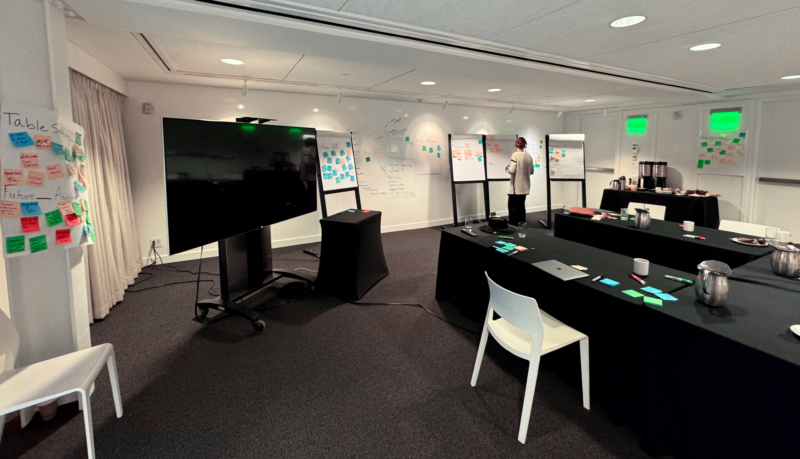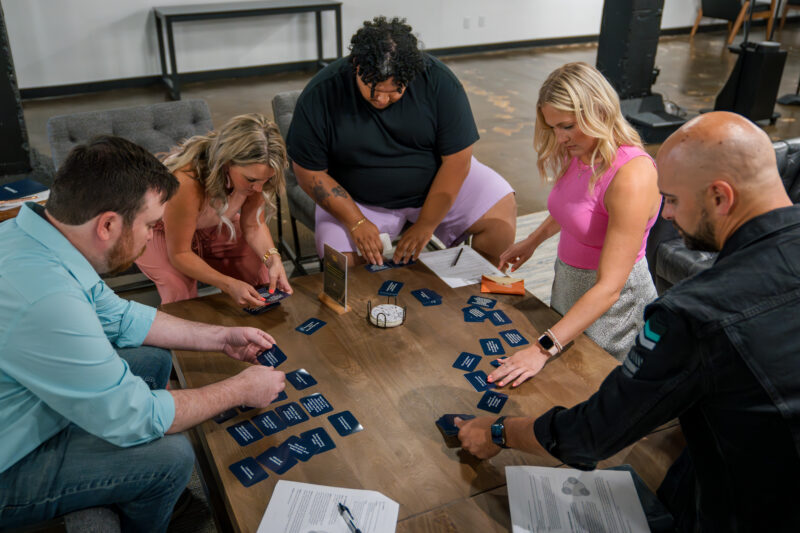Decoding Workplace Communication in the Modern Chaos
As I delve into the intricacies of workplace communication, the need to comprehend and adjust to diverse communication styles becomes glaringly apparent. Join me as I attempt to unravel the layers of workplace communication, and recognize that effective communication is not about a one-size-fits-all approach but about adapting to a dynamic exchange of diverse voices.

In the midst of today’s constant chatter, communication has become an unrelenting soundtrack: the ping of Google Chat, the never-ending email notifications, and the unexpected call from your DoorDash driver — sometimes from your camera doorbell! It’s a never-ending juggle. As I tackle this blog, I find myself ping-ponging between different channels: work chats and emails, messages from the kids, and the logistics of my grocery delivery. Each conversation demands a distinct approach.
A lot of us work hybridly, dealing with family at the same hour as our work. Switching gears between talking to my boss and conversing with my kids is no less than a linguistic tightrope walk. The formality of proper email etiquette stands in stark contrast to the casual banter of a work group chat. To emoji or not to emoji? That’s a real question — a dilemma in the evolving landscape of modern communication. (According to business.com, it is! Only sometimes, though, and maybe not really. 🤦🏻♀️)
As I delve into the intricacies of workplace communication, the need to comprehend and adjust to diverse communication styles becomes glaringly apparent. Join me as I attempt to unravel the layers of workplace communication, and recognize that effective communication is not about a one-size-fits-all approach but about adapting to a dynamic exchange of diverse voices.
The Facts
Let’s start at the top with some internet facts. Indeed states there are 4 types of communication:
- Verbal
- Nonverbal
- Visual
- Written
To think all the ways I communicate all day can be broken down into 4 bullet points is seemingly too easy. Inside each bullet point, if you care to dive in, is a rabbit hole in which I will not drag you down today. However, there is a common theme to all of them to support great communication. It’s empathy — caring enough to really listen to everything the person is saying. When people are talking to you, pay attention to the non-verbal cues they are giving off. It can help really see the full picture.
Effective Listening
Forbes has a list of 10 steps to effective listening, but I really like these 4 the most:
- Face the speaker and maintain eye contact.
- Be attentive, but relaxed.
- Have an open mind.
- Don’t immediately impose your “solutions.”
My goal is to do better to take these four tips and really use them. I can think of a few examples where I know the person I’m talking to is not listening. It could be their laptop is open, or they are constantly looking at their watch. It makes me feel like not only what I am saying is not important, but that I am not either. Or even worse, I can think of a few times I have done it to someone else. However, I can tell it makes a big difference when I take a minute to really listen to what they are saying. Sometimes, if I’m not sure what they need, it is okay even to ask them, “How can I help?”
Communication Preferences in the Workplace
In the work environment, it’s hard to ignore the diversity in communication preferences that permeate our workspace. It’s a scenario you might be familiar with in your own job: each generation has developed a fluency in a specific form of communication. What clicks for someone under 30 might not be as effective for someone over 50. Understanding these dynamics is not just about bridging communication gaps; it’s an investment in a more efficient and harmonious workplace.
Consider the colleague who consistently avoids answering calls but responds promptly and amiably to emails. Before attributing this to a personal aversion, consider generational nuances. For those in their thirties or younger, studies indicate a marked preference for email communication over phone calls or face-to-face interactions. This insight not only dispels misconceptions but also empowers us to adapt our communication methods for greater resonance.
Now, flip the scenario. If a colleague frequently opts for in-person interactions, knocking on your office door for a quick question instead of sending an email, it’s an opportunity to shift perspective. Rather than assuming all they want to do is waste your time, it might be a generational inclination. A way to bridge the gap in preferences goes back to our common theme: empathy. Extending grace, knowing a difference in communication does not necessarily mean disregard or disrespect, more over another tool to dissolve potential friction and enhance overall workplace efficiency.
Part of Our DNA
Working in a marketing agency, communication isn’t just a skill for us; it’s intricately woven into the very fabric of our day-to-day operations. As we craft narratives for our clients, ensuring that their stories resonate with their audience, the significance of internal communication cannot be overstated. Coordinating messages that cater to the needs of our clients, while also aligning with the vision of our designers and syncing with the technicalities understood by our partners is all part of our routine.
Navigating this communication landscape takes on a unique flavor for me, holding an administrative role within this marketing agency. Although, personally, I tend to gravitate towards face-to-face interactions, walking up to someone for a quick conversation, or posing questions in person, I’ve made it a personal mission to align my approach with the team’s preferences (whether they match mine or not).
Survey Says…
Intrigued by the diversity of preferences within our WeCreate team, I conducted an anonymous survey of just one question:
In general, do you prefer in-person or virtual meetings?
To my surprise, 69% of respondents indicated a preference for virtual meetings – invaluable insight! Armed with this knowledge, I’ve been more intentional about scheduling meetings rather than impromptu in-person discussions, respecting the team’s preferred communication mode.
Throughout this blog and everything I learned, it really reminded me that it all boils down to empathy and authenticity. Whether you’re talking to the janitor, your CEO, your kiddos, or a client, taking the time to pay attention to verbal and nonverbal cues, actively listening without jumping in to solve, and remembering each person has a preference that makes them more effective communicators — will all go a long way — both for the person you’re talking to and yourself.
Any other tips? Please share and connect with me on LinkedIn!
Most Recent Posts



